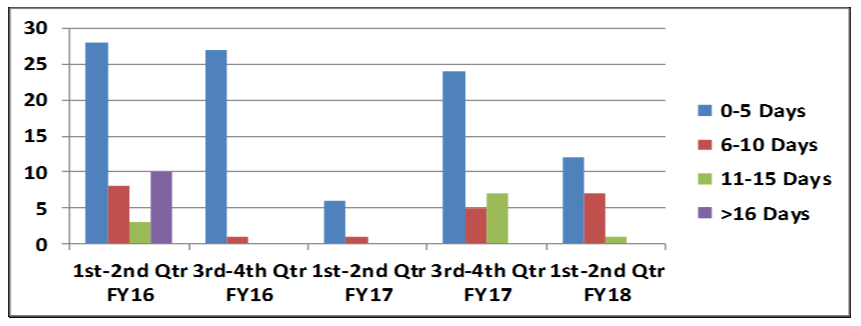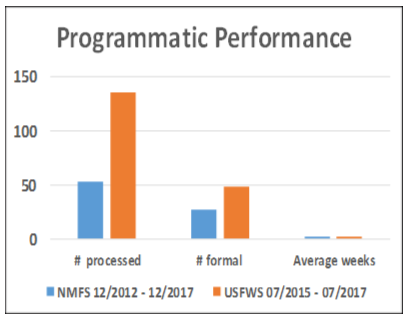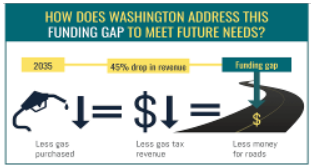U.S. Department of Transportation
Federal Highway Administration
1200 New Jersey Avenue, SE
Washington, DC 20590
202-366-4000
Washington Division

Voters in the Seattle Metro Area voted for a $54 billion package of light rail and other transit improvements over the next 20 years. Stemming from this several light rail lines will be constructed longitudinally within Interstate right-of-way (ROW). On May 23, 2017 Executive Leadership from Sound Transit (Regional Transit and Light Rail provider), the Washington State DOT (WSDOT), and the FHWA Washington Division signed a Letter of Commitment confirming their good faith commitment to streamline the process for the preparation, review, and execution of the airspace leases for the Lynnwood Link Light Rail project. The Lynnwood Link Light Rail project will be the first of several light rail lines in the Seattle metro area to be placed within existing Interstate ROW. The accelerated schedule was developed to obtain the airspace leases by March 2018. With focused review and commitment by staff of all three agencies the airspace leases for the L200 and L300 segments were fully executed on February 23, 2018. This more efficient and streamlined process represents good management practice, which has served the Lynnwood Link project very well in staying on track towards its goal of obtaining a Full Funding Grant Agreement from the Federal Transit Administration in FY 2018. This “good management practice” will also be a model for other airspace leases the three agencies are expected to collaborate on for future light rail projects running longitudinally within existing Interstate ROW.


On December 1, 2017, the Washington Division approved the State of Washington’s first Freight System Plan sanctioned under the Fixing America’s Surface Transportation (FAST) Act. WSDOT collaborated for more than a year with an impressive array of stakeholders, including an active Freight Advisory Council and the Freight Mobility Strategic Investment Board, among many others. Each of these parties includes representatives of trade and freight mobility proponents such as ports, trucking associations, rail, cities and counties, and other freight-related business throughout the state of Washington. The State’s Freight System Plan includes a Freight Investment Plan, which guides the freight funding investments for the state and includes a list of priority projects now eligible for National Highway Freight Program (NHFP) funds. Washington’s first round of freight projects in its new Freight System Plan leverages $89.5 million in Federal NHFP dollars and results in $323.3 million in freight-related projects through FFY 2020. Having this State Freight Plan in place and approved by FHWA also offers future opportunities for not only the NHFP funds, but freight-eligible funding opportunities “noticed” (Notice of Funding Opportunity, Notice of Funding Availability) in the Federal Register.
In Federal Fiscal Year (FFY) 2018 WSDOT received $1,000,000 in Accelerated Innovation Deployment (AID) Demonstration funds for the Concrete Replacement Demonstration Project using precast concrete panels on I-90. For details on the AID Demonstration Program go to: https://www.fhwa.dot.gov/innovation/grants/projects/
Also in FFY2018 WSDOT received $100,000 in State Transportation Innovation Council (STIC) Incentive Program funds to develop a low volume pavement rehabilitation online scoping tool for local agencies. For details on the STIC Incentive Program go to: https://www.fhwa.dot.gov/innovation/stic/guidance.cfm.
In addition, in 2018 WSDOT received $100,000 in FFY2019 STIC Incentive program funds which were made available early to develop the Collaborative Hydraulics Manual to incorporate 2D Modeling. For details go to: https://www.fhwa.dot.gov/innovation/everydaycounts/edc_4/change.cfm.

The tables above reflect the number of days taken by the FHWA Washington Division to approve authorizations / modifications submitted into the Financial Management Information System (FMIS) from WSDOT. (Our Stewardship & Oversight agreement states we will turn around requests within 5 days or less). For Federal Fiscal Year (FFY)2017 1635 out of 1745 FMIS requests were approved within 5 days or less which calculates out to 94%. This is an improvement of 10% from FFY2016 year end percentage of 84%.
INACTIVE PROJECT PERCENTAGES AND TOTAL NUMBER OF INACTIVE PROJECTS
A total of 319 projects were inactive in the third and fourth quarters of FFY2017 (150 and 169), representing an inactive percentage of 1.8% and 1.6%, respectively. FHWA’s quarterly target is under 2% inactivity of total obligated Federal funds. The quarterly inactive percentage is found by dividing all inactive projects (projects with no expenditures processed for 12 months or more) total unexpended obligation by each state’s total annual fiscal year apportionments.

The FHWA Pavement and Materials Engineer from the Resource Center provided two two-day workshops to local agencies in Washington State on the Every Day Counts (EDC) Pavement Preservation (When, Where, and How), a whole-life approach to extending the service life of pavement networks innovation. The first workshop took place on February 13 & 14, in Lacey, WA. The Lacey session included 65 total participants with over 40 individuals from local agencies and 22 from WSDOT. The second workshop took place on February 15 & 16, in Spokane, WA. The Spokane session included 34 participants with about 20 individuals from local agencies, 9 from WSDOT and a few consultants. These workshops were so well received by WSDOT and local agency participants, a few more sessions are planned to be requested for later this year. To schedule a workshop contact Jason Dietz at jason.dietz@dot.gov (ph. 720-810-0871) of the FHWA Resource Center. For information on Pavement Preservation (When, Where, and How) go to the following link: https://www.fhwa.dot.gov/innovation/everydaycounts/edc_4/pavement.cfm.
Environmental Approvals:
Design Approvals:
Other:

This chart shows the timeliness of FHWA Washington Division approval for emergency relief (ER) damage inspection reports. Our goal is to approve 90% of these reports within 10 days of receipt. ER reports that exceed 16 days are delayed typically due to external permits, need for additional information, and other factors.

National Marine Fisheries Service (NMFS) Statewide Programmatic Endangered Species Act (ESA) Consultation - FHWA received a biological opinion (BO) from NMFS in December 2012. Through 2017 (five years of programmatic use) 53 WSDOT projects were processed under the consultation. Approximately half were formal consultations. Twenty-four projects were fish passage barriers and due to their beneficial nature for fish and habitat, many qualified for the “Fast Track” process which is an expedited (within five-days) process. For the rest of the programmatic projects, NMFS issued their programmatic coverage approvals within an average of two weeks, which is significantly less than the targeted 30-day period and is a vast improvement over average timelines to complete individual formal consultations (over 200 days). For all categories of incidental take, FHWA and WSDOT are well below the annual limits specified in the BO.
U.S. Fish and Wildlife Service (USFWS) Statewide Programmatic ESA Consultation - FHWA received a BO from USFWS on July 2, 2015. The BO concluded a two-year effort between FHWA, WSDOT, and USFWS to update and improve the existing consultation. Since implementation, 135 WSDOT projects were processed under the consultation. Forty-eight of these were formal consultations. USFWS issued their programmatic coverage approvals within an average of 15 days, which is significantly less than the targeted 30-day period and is a noted improvement over average timelines to complete individual formal consultations (over 200 days). The programmatic consultation is providing coverage for an estimated 80% of FHWA actions needing section 7 consultation, which is better than the 70% utilization target.
U.S. Fish and Wildlife Service (USFWS) Statewide Programmatic Endangered Species Act (ESA) Consultation for Local Agency Projects - FHWA in partnership with WSDOT Local Programs staff developed a programmatic biological assessment (BA) that analyzed effects from a comprehensive suite of transportation project activities. The programmatic BA addresses adverse effects to bull trout and insignificant and discountable effects to other species under USFWS jurisdiction. FHWA submitted the BA to USFWS in July 2017 and requested formal consultation. FHWA is working closely with USFWS as they draft their BO. The final BO is expected in late 2018 and will provide an expedited review and approval process for certain projects that adversely affect bull trout and their critical habitat.


| For more information contact: | ||
|---|---|---|
| Dan Mathis Division Administrator FHWA Washington Division 360-753-9480 Daniel.Mathis@dot.gov |
Bruce Moody Program Management Analyst FHWA Oregon/Washington Division 503-316-2542 Bruce.Moody@dot.gov |
 |